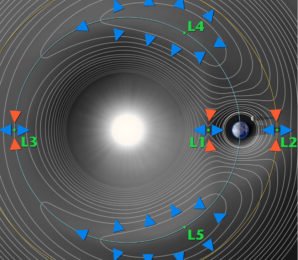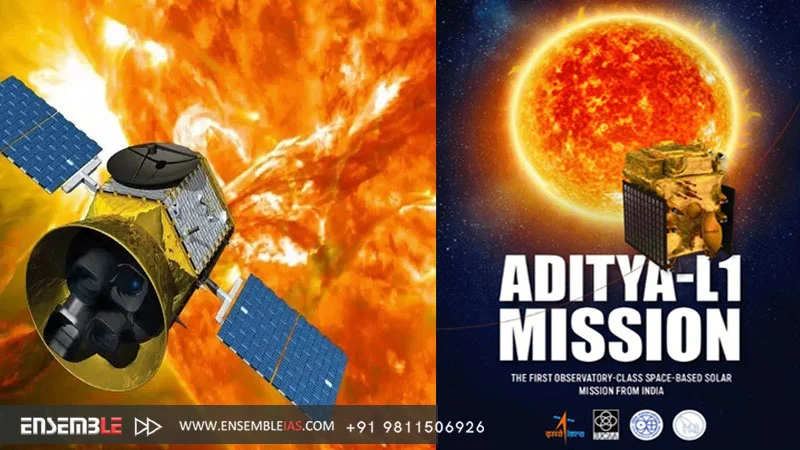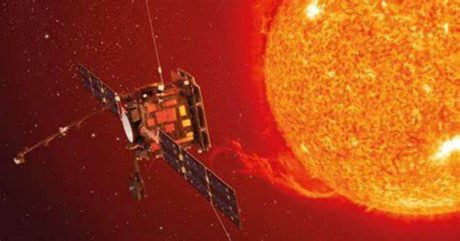Aditya L1 Mission: After the Chandrayaan-3, it is the Sun for the Indian space agency.
Days after landing India on the Moon safely, the Indian Space Research Organisation (ISRO) will be launching the country’s first space-based observatory called Aditya-L1 to study the Sun at 11:50 AM on September 2, 2023 from Andhra Pradesh’s Sriharikota.
The Aditya L1 Mission is an exciting and educational opportunity for students to learn about space science and exploration.
• Aditya L-1: Aditya L1 will be the first space based Indian mission to study the Sun. The Indian space agency has invited public to register in order to view the proposed launch from the gallery at the Sriharikota space port in Andhra Pradesh. The sun is the nearest star and therefore can be studied in much more detail as compared to other stars. By studying the sun, we can learn much more about stars in our Milky Way as well as about stars in various other galaxies.
The link to join the course : Online Courses
Need For The Mission
1. Study of Solar upper atmospheric (chromosphere and corona) and photosphere dynamics.
2. Study of chromospheric and coronal heating, physics of the partially ionized plasma, initiation of the coronal mass ejections, and solar flares
3. Observe the in-situ particle and plasma environment providing data for the study of particle dynamics from the Sun.
4. Physics of solar corona and its heating mechanism.
5. Diagnostics of the coronal and coronal loops plasma: Temperature, velocity and density.
6. Development, dynamics and origin of CMEs.
7. Identify the sequence of processes that occur at multiple layers (chromosphere, base and extended corona) which eventually leads to solar eruptive events.
8. Magnetic field topology and magnetic field measurements in the solar corona .
9. Drivers for space weather (origin, composition and dynamics of solar wind .
What is Lagrangian Point?

• As per ISRO, For a two-body gravitational system, the Lagrange Points are the positions in space where a small object tends to stay, if put there. These points in space for a two-body system such as Sun and Earth can be used by the spacecraft to remain at these positions with reduced fuel consumption. Technically at Lagrange point, the gravitational pull of the two large bodies equals the necessary centripetal force required for a small object to move with them. For two-body gravitational systems, there are total five Lagrange points, denoted as L1, L2, L3, L4, and L5. The Lagrange point L1 lies between Sun-Earth line. The distance of L1 from Earth is approximately 1% of the Earth-Sun distance.
• The spacecraft, after traveling about 1.5 million km from the Earth over 125 days, is expected to be placed in a Halo orbit around the Lagrangian point L1 which is considered closest to the Sun. The spacecraft shall be placed in a halo orbit around the Lagrange point 1 (L1) of the Sun-Earth system, which is about 1.5 million km from the Earth. A satellite placed in the halo orbit around the L1 point has the major advantage of continuously viewing the Sun without any occultation/eclipses.
Aditya-L1’s Implication in India
1. Studying the Sun as well as eyes in space
Disturbances in the form of solar flares, Coronal Mass Ejection, or solar winds directed towards Earth, can adversely impact space weather
2. Aditya-L1 can potentially pave the way for future Indian astronomy missions.
3. Solar physics now demands multiwavelength astronomy. It will be important how data from various instruments on Aditya-L1 are effectively combined and put to use to make sense of a solar event, its source, causes, local conditions, etc. This will require coordinate observations taken across different instruments
4. Space weather alerts the mission hopes to generate user-friendly information that can help safeguard a range of satellite-dependent operations such as telecommunications, mobile-based Internet services, navigation, power grids, etc.
5. We can also get information about the environment around the L1 point, which is key for understanding space weather
6. The Aditya Solar wind Particle Experiment (ASPEX), built by the Physical Research Laboratory, will turn on while in transit.
Best Online Coaching for Civil Service_IAS_ UPSC_IFS_IPS
Free Study Material ENSEMBLE IAS ACADEMY | Call +91 98115 06926 | Visit us:- https://ensembleias.com/ | Online Store: https://online.ensemble.net.in/
#adityal1 #isro #Space #NASA #Chandrayaan #Mangalyaan #PMO #Scientist #AdityaL1 #PSLVC57 #Sriharikota #ISRO_ADITYA_L1 #सूर्यमिशन #adityal1 #solarmission #isro #adityaL1 #Space #NASA #Chandrayaan #Mangalyaan #PMO #Scientist #ensembleiasacademy #geographyoptional #ias #civilservices #upsc_aspirants #upsc_exam






